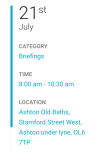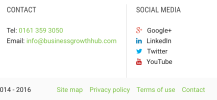Would you change your career from Graphic Design to UX Design?
According to this article
https://www.interaction-design.org/...career-from-graphic-design-to-ux-design?ep=mb
there might be more advantages, at least in terms of salary.
However, you have to adjust your mindset to those principles that are different of our way of thinking as Graphic Designers. The biggest challenge would be that on certain occasions, we would have to stop making a priority out of the aesthetic preoccupation and focus more on the user, in a proactive and iterative manner.
I personally find it very difficult. If I find something that looks incomplete visually speaking, even if it's more eligible UX-wise, my mind stops there until I consider it 100% aesthetically pleasant.
And I wonder: is there any way of tricking your mind into accepting a product for its UX aspect rather than the graphic one? Is there a way of preparing a presentation without giving so much thought to the way it looks as long as it's functional and you can save time?
Or maybe our thinking patterns are set in stone?
https://generalassemb.ly/blog/what-type-of-design-is-right-for-you/
What would you do if you were considering a career shift towards UX Design?
According to this article
https://www.interaction-design.org/...career-from-graphic-design-to-ux-design?ep=mb
there might be more advantages, at least in terms of salary.
However, you have to adjust your mindset to those principles that are different of our way of thinking as Graphic Designers. The biggest challenge would be that on certain occasions, we would have to stop making a priority out of the aesthetic preoccupation and focus more on the user, in a proactive and iterative manner.
I personally find it very difficult. If I find something that looks incomplete visually speaking, even if it's more eligible UX-wise, my mind stops there until I consider it 100% aesthetically pleasant.
And I wonder: is there any way of tricking your mind into accepting a product for its UX aspect rather than the graphic one? Is there a way of preparing a presentation without giving so much thought to the way it looks as long as it's functional and you can save time?
Or maybe our thinking patterns are set in stone?
https://generalassemb.ly/blog/what-type-of-design-is-right-for-you/
What would you do if you were considering a career shift towards UX Design?

